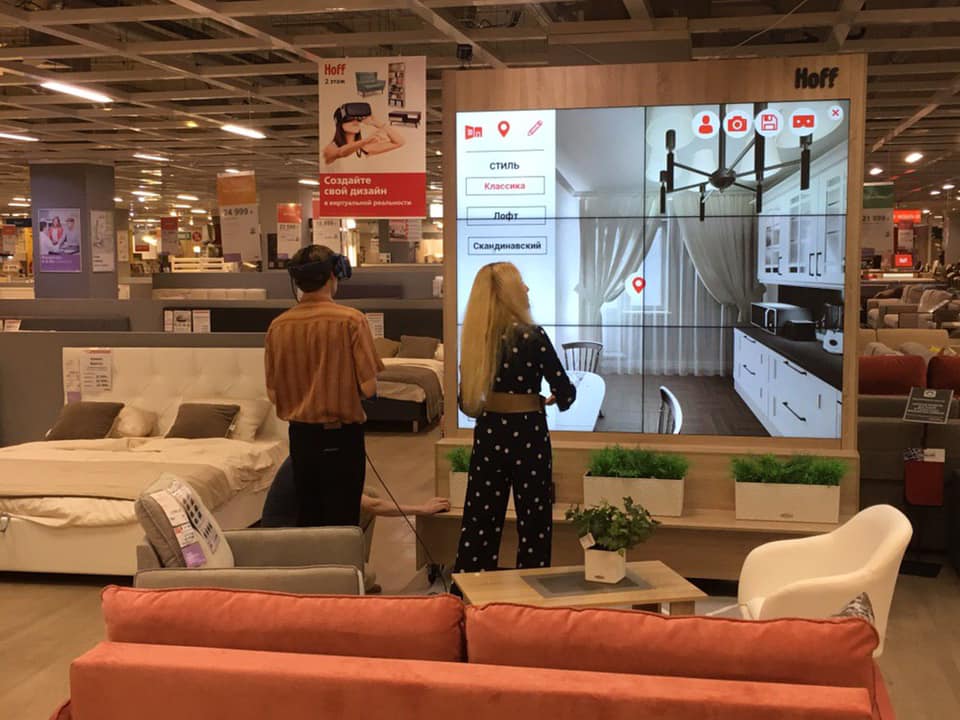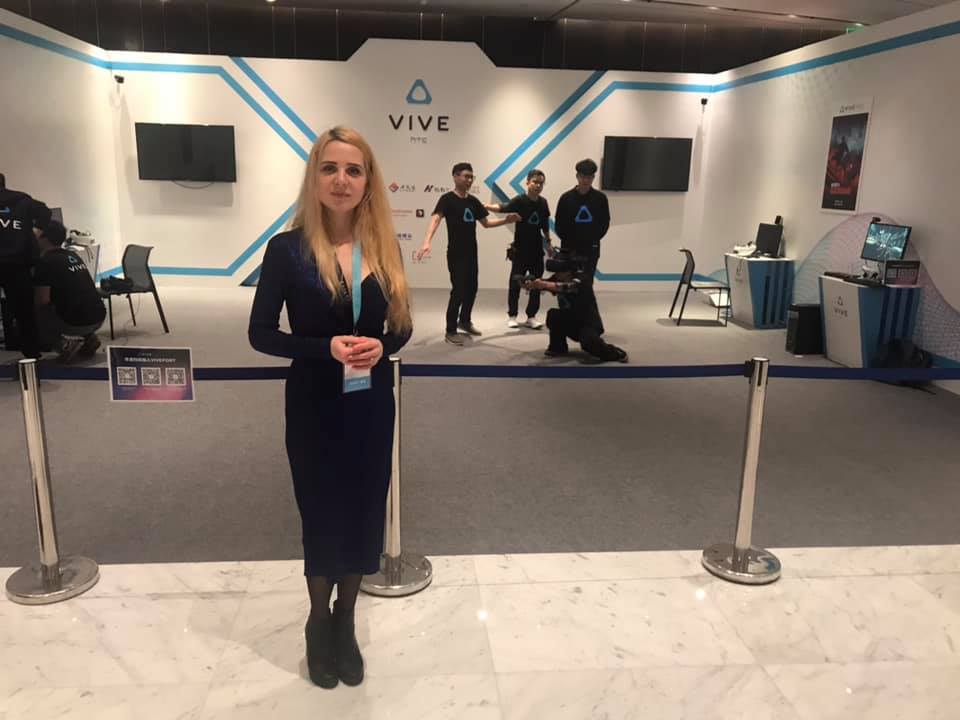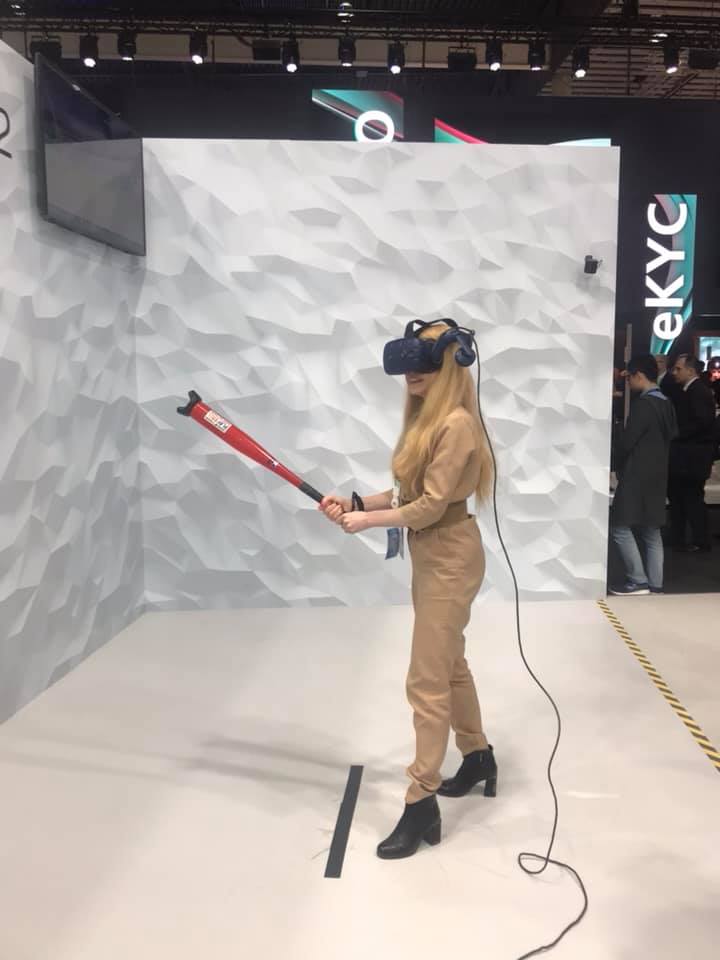When the time came for airships, airships appeared. When the time came for airplanes, airplanes appeared. When the time of cars came, cars appeared. When the time of the Shuttles came, the Shuttles appeared. When the time comes for gravity shifters ... And what are grap shifters? Not a clue. Their time has not come yet.
It was with great pleasure that I talked with Elena Khlapina, CEO at Immergity, about whether VR and AR had already arrived or not. As once, the time has not come for TVs with 3D-screens, smartphones with 3D-screens, Apple Newton and many wonderful devices that neither consumers nor business have understood.

You have a very interesting professional path at MSTU. Bauman. Specialty "Computer-aided design systems". U.S. Academy of Arts in San Francisco. Own architectural bureau "Inproekt". Why VR, how did you decide to deal with this particular area?
VR - this was a natural consequence of the desire to maximally clearly and presentably show people their future apartment, even if it does not already exist, even if the house has not yet been built at all. And it was interesting to realize what did not exist before.
When we started working on technology, little was known about VR in Russia in general, and even in Moscow. There were few applications. And we set an ambitious task to make it possible to wirelessly move around the future apartment in virtual reality glasses, so that at the same location, at the same showroom, it was possible to demonstrate different apartments. So that a person can walk on them physically and understand the space, look under the furniture, look out the windows, enjoy how he will live in this apartment, even if the house is still unfinished.
Because VR in my life appeared as a challenge to make a new useful tool for selling real estate.
The plus was the hypothesis that thanks to our technology, developers will save a lot of money on the implementation of a physical showroom. Previously, it was considered important to build a showroom, where a person comes, walks on it. Makes a purchase decision.
We formalized these hypotheses with the proposal and began to collaborate with one of the developers, who believed in our idea, advanced the project. I promised to return the money if the project fails. But the project was a success. It is implemented. The project was paid for - and this began our tight work with VR.
How does the market look like the VR market in Russia and the world when you started doing this? What has changed over the years?
Over the years, a lot of equipment has appeared that made it possible to display a picture in the best quality, with a large extension, this equipment allows you not to create your own software - large IT corporations are already worried about this. In our first case, we essentially wrote software from scratch. They connected motion sensors with helmets, wrote a whole harness so that CardBoard could walk around the apartment without wires. An incredible amount of equipment has now appeared, allowing you to enjoy VR in much more comfortable conditions.
And then what has changed ...
More players appeared on the market. VR has become more understandable. Especially for developers who were initially skeptical of this. And now many have tried and realized that in certain situations VR helps to expand the capabilities of the user experience and sell real estate properties with great convenience, especially in new buildings.

Our thinking has changed. We set ourselves new goals. One of them was the implementation of the VR showroom for Hoff - a unique experience in real time setting up the interior, walls, floors, choosing furniture, color, sending pictures to the client by e-mail.

Probably, then if we focused on the first success and really digitized it at its best, showed success metrics, showed the possibilities of scaling and integration, we would have earned even more money, even more glory, than switching to other activities. But now it’s hard to say what would be the best, what would be the worst.
Thanks to the fact that we were noticed by Alexei Blokhin - he helped in terms of resources to increase the staff of the team, hiring professional specialists - we changed the direction of movement.
And switched from B2B tools to a large gaming market. At that moment, when we entered the VR market, it seemed tasty to us and, according to all forecasts, it was supposed to grow. But when we started working and releasing the first games, we realized that there wasn’t the fantastic demand that we expected. And this problem is not only in our games, but in principle this story is simply that there was no market, the market began to decline. And so it learned that even games when winning competitions, when using well-known brands, for example, “Fixics”, did not earn a lot of money. But we realized the potential of software and gamified products.
We didn’t earn much money in games. But enriched with experience. And we returned to B2B cases. With a clear predictable monetization, when you conclude a contract with a client, you get a fee that allows you to complete the development. We made a virtual showroom for the same Sberbank. The augmented reality game was created for Sberbank. Another series of VR showrooms for B2B clients.
And having groped the idea of automating the processes of design engineering, we came to the formation of internal technical specifications for the VIM project.
VIM is a generator of automatic interiors. We are working on this project now. And which unites all the experience accumulated by me and my entire team.
We became residents of Skolkovo. Included in 16% of companies that receive this status the first time. We defended the grant, as a result, it became a little easier to develop the project. State aid was very helpful.

Thanks to the Skolkovo grant, VIM was born as a car designer who is able to recognize a plan. A person fills out a short questionnaire - and VIM will put furniture on the recognized plan. And at the same time offer the user several options for arranging furniture in space - without a long wait.
What are the main trends of VR and AR? Where is all this going? What is more promising?
This question is often asked at large conferences. It seems to me that these tools are good for implementing their tasks. AR - as a tool for tips, training. Mixed Reality is also good as a hint - for example, in the workplace it can tell an employee how to act in an emergency. And VR, it gives complete immersion and allows you to simulate something that does not exist in real life, using many channels of perception.
It happens that technology is out of time. Consumers simply do not know what to do with them. As a result, the trend subsides. It looked like with 3D TVs and 3D screens on smartphones. Do you think this can happen in VR?
Technology is already in steady demand. The most important thing for technology is to find the right application. VR is used in training. Allows a person to be included in the process. There is a demand. I believe that demand will be even greater.
If there was an understandable business use, then 3D-screens of smartphones existed until now. And so it turned out to be a toy that no one needs - neither users nor business.
What obstacles do you see VR - hardware, software or still not adapted control for VR? So far, developers are copying standard scripts worked out in 2D devices.

Of course, VR should have completely different interfaces. By copying standard approaches, you will not achieve revolutionary progress. The largest international companies that play games in VR mainly work on interfaces. The companies that are engaged in simulators. Military corporations.
At international exhibitions, you communicated with the top management of Sony, HTC, Samsung. What do you think they are planning in the coming years, what trends are emerging in VR?

Cheaper devices themselves. The main barrier is a rather high cost. The smaller, the more convenient this device will be, the more popular it will be. Ideally, these are glasses - which can work both as ordinary glasses and as VR \ AR devices. I know that all of the listed companies are developing roughly similar devices - each has its own vision, but nonetheless.
What do you think when VR comes into cyber sport? Is someone already doing this?

Yes, development is ongoing. The severity of the helmet itself makes it uncomfortable to spend many hours in the helmet. This limits the use of VR in cyber sports.
What VR applications do you see as a whole now? Architecture, defense, medicine, training?
All of the above. Training of employees in the event of a man-made accident, for example, a reactor explosion - accuracy of movements, speed of decisions, sophisticated tactics.
Can AI replace the human designer and when will this happen?
I think that there will always be VIP clients who want to communicate with a person. These people buy not only the product and solution, but the process itself. I think that AI will be useful in the medium-economy comfort segment. High specialists in design will always be in demand - at least in order to train AI.
What are your company's plans for the future?
I really want the VIM project to become a platform that brings together such players as banks lending for the purchase of real estate, furniture, decoration, furniture manufacturers themselves, developers. The plans are interesting and great! Well, then the project’s launch on the international market. Our plans so far are China. But interesting offers from the USA are already appearing.
PS We've been waiting on the VR "The Matrix", the blue and red pills ... but instead received marketing. If you do not expect entertainment from VR, but see a marketing, advertising tool in it, it’s quite a cake. Perhaps this is just a transitional stage, and not a "big step for humanity." Time will tell!